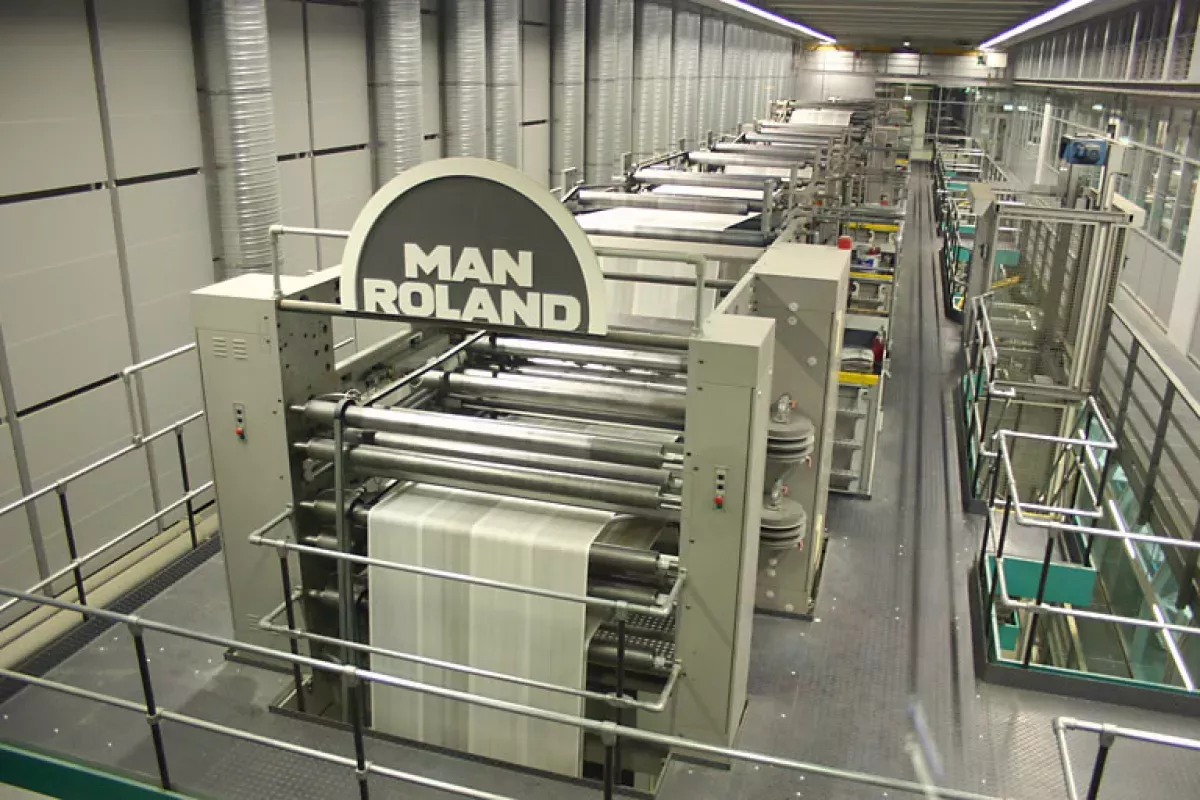Offset printing is a widely used printing technique where an inked image is transferred from a plate to a rubber blanket, then to the printing surface. It's often combined with lithography, exploiting the repulsion of oil and water using a flat image carrier. Ink rollers apply ink to the image areas, while water rollers apply a water-based film to the non-image areas, ensuring ink adheres only to the intended sections.
1901: Rubel's Accidental Discovery
In 1901, Ira Washington Rubel discovered that printing from the rubber roller, instead of the metal, made the printed page clearer and sharper.
1903: Potter Press Printing Company produced a press
In 1903, after further refinement of Rubel's discovery, the Potter Press printing Company in New York produced a press.
1904: Rubel and Hermann's Offset Machine Prototype
In 1904, Ira Washington Rubel of the United States invented one version of the offset press for printing on paper, and Kašpar Hermann in Continental Europe created the offset machine prototype.
1907: Rubel Offset Press in Use in San Francisco
By 1907 the Rubel offset press was in use in San Francisco.
1907: Hermann Starts Printing with Triumph Sheetfed Offset Press
In 1907, Kašpar Hermann successfully started printing in Germany on his Triumph sheetfed offset press.
1954: McBrayer Unveils Vanguard Web Offset Press
In 1954, newspaper publisher Staley T. McBrayer unveiled the Vanguard web offset press for newspaper printing in Fort Worth, Texas.
2003: Lithography as Primary Printing Technology in the U.S.
In 2003, lithography, most often as offset lithography, was described as the primary printing technology used in the U.S., responsible for over half of all printing using printing plates.
Mentioned in this timeline

San Francisco is a major commercial financial and cultural hub...
Germany officially the Federal Republic of Germany is a Western...
Texas the second-largest US state by area and population is...

Fort Worth located in Texas serves as the county seat...
Trending

1 month ago Conor McGregor's Transformation: Faith, Healing, and a Promise to the World

54 minutes ago Lamar Jackson's mother scolded him; Hamilton, Bateman to play against Bengals.

7 months ago Adam Sandler in 'Jay Kelly' with George Clooney; Rival movie releases compared.

54 minutes ago DeAndre Hopkins chases history as Lamar Jackson seeks a bigger target role.

6 months ago Matt Rife Announces Birmingham Comedy Tour Stop and Stars in New Rom-Com!

2 months ago UFC 320: Dvalishvili Dominates, Pereira Triumphs, and Topuria's shadow looms large.
Popular
Aftyn Alyssa Behn is an American politician currently serving as...

William Franklin Graham III commonly known as Franklin Graham is...

XXXTentacion born Jahseh Dwayne Ricardo Onfroy was a controversial yet...

Candace Owens is an American conservative political commentator and author...

Marjorie Taylor Greene known as MTG is a U S...

Maxine Waters is an American politician who has served as...
